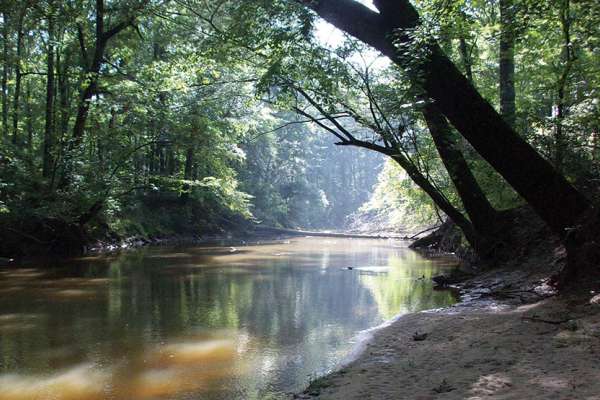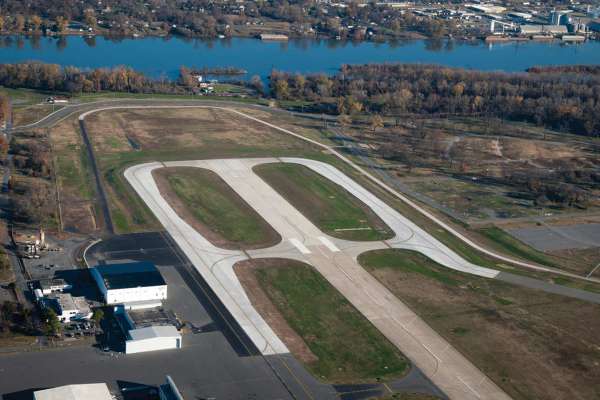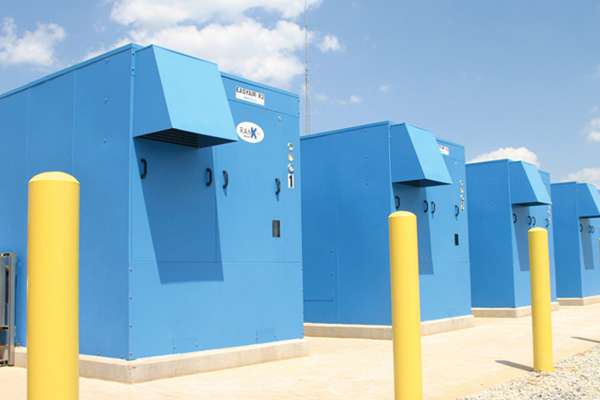Runway extension isolates general aviation from air carrier traffic
A runway extension is providing Bill and Hillary Clinton National Airport with greater freedom to separate its general aviation flights from air carrier operations.
Arkansas' largest airport extended Runway 18/36 another 1,100 feet to better accommodate larger corporate jets on its general aviation runway. This enables airfield controllers to use the 6,224-foot Runway 18/36 for more business jet traffic and dedicate the other two runways to air carrier operations.
Prior to the runway extension, larger corporate jets landed on one of the air carrier runways and taxied across the airfield to the airport's FBOs located on the west side. Enabling more general aviation aircraft to use Runway 18/36 will result in fewer potential runway incursions by reducing the need for general aviation aircraft to cross the airfield. This will also benefit pilots by allowing them to land closer to their final destination and reduce the work load of air traffic controllers. Delays to commercial airlines on Runway 4L/22R and 4R/22L will be reduced by moving general aviation aircraft to Runway 18/36.
According to airport officials, this makes Bill and Hillary Clinton National Airport a premium location for general aviation flights that require fuel stops because the improvements eliminate many of the taxiing and traffic hassles found at larger airports.
In addition to the runway extension, the three-year project extended two parallel taxiways, relocated a perimeter road, expanded the runway safety area, installed LED lighting and navigational aids, relocated utilities, improved storm drainage and moved a city street.
Utility Relocation
The runway extension incorporated property that had previously served as a residential area. Due to extensive on-site utilities, the project required a major relocation effort and coordination with more than a dozen companies and agencies. Utilities included water, sewer, power, gas, telephone and cable TV lines. In particular, significant care was needed to proceed with work around two existing 24-inch gas pipelines.
Street Relocation
The runway extension also spurred the relocation of 6th Street, a four-lane minor arterial that is the primary roadway entrance for Dassault Falcon Jet and its 1,800 employees. Traffic flow was maintained throughout construction. In addition to roadway demolition, the project tied into four intersections and included storm drainage, utility relocation, site grading and airfield design coordination.
Multiple Project Management
At the same time Garver provided services to extend Runway 18/36, Garver also managed two separate airfield projects that improved western portions of the airfield.
Taxiway D was reconstructed to replace dated pavement and provide a new heavy and low-visibility route. The American Recovery and Reinvestment Act of 2009 provided monies for this project and converted the taxiway from a 75-foot-wide asphalt pavement to concrete. Garver designed the project and issued a notice to proceed to the contractor within a quick three-month timeline.
The second project added taxiway in-pavement centerline lights to multiple taxiways, in-pavement edge lights to Taxiway A and in-pavement runway guard lights (RGL) to two runway and taxiway intersections. The lights provide safer low-visiblity operations for GA customers as part of the airport's Surface Movement Guidance and Control System (SMGCS) Program.
"We used a total of 827 LED fixtures in all three projects," said Garver engineer Adam Roberson. "We utilized all LED in-pavement centerline lights and LED runway guard lights, which is the first installation of that type of RGL at an Arkansas airport."
With all three airfield improvements under construction at the same time, the projects required an extensive coordination effort to ensure safety.
Construction Safety
With multiple contractors and agencies working on the three major improvement projects, Garver took steps to limit the impact to aircraft operations and enhance safety during construction. Much effort went into the preparation of construction safety plans, management of contractor operations and coordination with the airport, contractors, control tower and FAA personnel.
Garver managed contractor operations and surface closures to ensure two aircraft taxi routes remained available throughout construction. Garver also carefully considered haul routes and the scheduling of surface closures to reduce equipment and aircraft conflicts. This project was a finalist in an FAA excellence in construction safety award competition.
Record Rainfalls
This three-year, $17 million project was completed on time, which is quite impressive considering Arkansas set yearly rainfall records in 2009.
"We experienced some of the worst construction weather in Arkansas that we've ever had," said Garver Project Manager Earl Mott, PE. "Last October was the wettest in history, and if you go back and look at the entire year, we had a significant amount of rainfall and bad weather. We worked through it and completed the project on time."
By the Numbers
3 year project 221 airfield light fixtures 1,100 foot runway extension 2,500 linear feet of relocated four-lane roadway 9,800 linear feet of storm drainage piping and box culverts 62,171 square yards of 13-inch-thick concrete pavement 135,000 square feet of pavement markings (3.1 acres) 300,000 cubic yards of dirt moved $17,000,000 total project cost.






Share this article